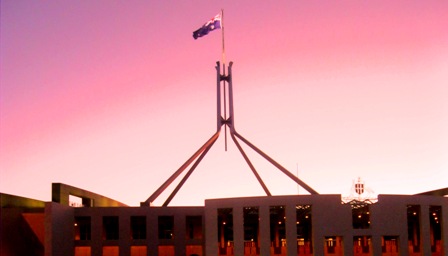A few weeks ago I heard Ramona Koval interview Roseanne Barr on ABC Radio National’s The Book Show (Friday 08.07.2011), and judging from the comments section of the website for this show, I wasn’t the only person who found it a great interview. Roseanne has a new memoir Roseannearchy : dispatches from the nut farm, and the interview covered feminism, class, living your life in public, personal criticism of Roseanne by pretty much anyone who wrote a column anywhere, and about being from “the tribe of librarians.”
 I think there are allot of fans of Roseanne Barr out there (a look around her blog will tell you as much), and they are not heard as much as the critics – it is very easy to write derogatory things about a woman who created a show about working class life in America in the 1980’s when everyone was supposed to be aspiring to be more than working class, but when most people lived a working class life. It’s easy because it’s easy to belittle people if they can’t be seen, heard or acknowledged, and working class people aren’t ever heard or seen in the mass media – do you see tradesmen reporting the news, nurses hosting TV shows, or truck drivers winning awards? Although they work five or more days a week every week of their lives, quietly keeping the world on track, working class people rarely get a real voice. I am not suggesting bricklayers start reporting the news, only that if there isn’t a forum to hear something, nothing is going to be heard, and as a result, invisibility makes it appear as if certain people, their ideas, and the issues they deal with, don’t exist.
I think there are allot of fans of Roseanne Barr out there (a look around her blog will tell you as much), and they are not heard as much as the critics – it is very easy to write derogatory things about a woman who created a show about working class life in America in the 1980’s when everyone was supposed to be aspiring to be more than working class, but when most people lived a working class life. It’s easy because it’s easy to belittle people if they can’t be seen, heard or acknowledged, and working class people aren’t ever heard or seen in the mass media – do you see tradesmen reporting the news, nurses hosting TV shows, or truck drivers winning awards? Although they work five or more days a week every week of their lives, quietly keeping the world on track, working class people rarely get a real voice. I am not suggesting bricklayers start reporting the news, only that if there isn’t a forum to hear something, nothing is going to be heard, and as a result, invisibility makes it appear as if certain people, their ideas, and the issues they deal with, don’t exist.
I remember from the 1980’s that people would often talk about the Roseanne show, in school, in the home, it really did have an effect much greater than it is given credit for by the people who have seven day attention spans in the media. An article from the New York Times about the end of the Roseanne series finishes with an insightful comment about how the world of mass media and the real world barely relate to one another. In an episode of the show, a TV producer comes to turn Roseanne’s life into a TV sitcom, but he doesn’t want anyone like Roseanne in it.
”You’re blue collar. Middle America is blue collar. Americans want to see themselves on television.” Of course, he didn’t think it was a bad idea to cast Melanie Griffith as Roseanne. ”Nobody in their right mind is going to want to look at you,” he tells her. Proving guys like that wrong for nine years may have been Roseanne’s sweetest revenge. It was a revenge that Middle America could share.
‘Roseanne’ and the risks of upward mobility / Caryn James, New York Times, 18.05.1997, viewed 24.08.2011, http://www.nytimes.com/1997/05/18/arts/roseanne-and-the-risks-of-upward-mobility.html
I can’t bare to watch reality TV, and until I read that passage above I couldn’t articulate why. Now I can – so look out, here comes a rant! It’s because reality TV has taken working class people – ordinary people out there minding there own Continue reading →






